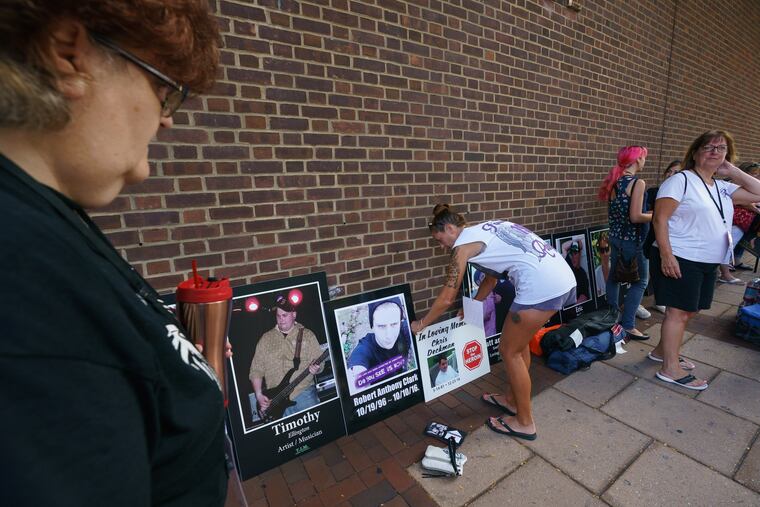With eyes on Philly, it’s time for the U.S. to embrace overdose prevention sites | Opinion
Philadelphia took center stage at a hearing on nonprofit Safehouse’s proposed overdose prevention site. Eyes across the nation are watching this case that inevitably will impact other jurisdictions aiming to implement this strategy.

We are in the throes of an unprecedented public health epidemic. Since 1999, there has been a nearly four-fold increase in drug overdose death rates. And in 2017, a record 70,237 people across the United States died from a drug-related overdose. That’s more lives lost per year than gun violence or HIV took at their peaks. And that’s a crisis that is bringing together law enforcement, criminal justice, religious leaders and others to demand a solution that can save lives.
Earlier this week, Philadelphia took center stage in this fight in a hearing on nonprofit Safehouse’s proposed overdose prevention site. Eyes across the nation are watching this landmark case that inevitably will impact other jurisdictions aiming to embrace and implement this life saving strategy.
As people entered the Philadelphia district court for the Safehouse hearing, the faces of the epidemic that has claimed three or more opioid lives per day were unavoidable. Posters featuring the far-too-many victims of preventable overdose deaths lined the street underscoring the tragic saga of criminalization and stigma that continues to push people into the shadows of alleys, where deadly overdoses go unobserved until it’s too late. These precious minutes between injection and overdose are costing Philadelphia, and America, thousands of lives.
This crisis is testing our moral compass and calls for us to act. Yet our primary response to the problem has been punitive measures that have failed for decades.
It’s time to choose a different pathway – one rooted in proven strategies that recognize people’s humanity and the urgency of this issue.
That’s why over 60 prosecutors and law enforcement leaders joined in an amicus brief agreeing with Safehouse that these sites are vital, legal life-saving tools. In total, 11 amicus briefs were filed, bringing an impressive breadth of perspectives, including religious leaders, public health officials, academicians, Attorneys General, and other voices to the mix – and underscoring both the widespread support for overdose prevention sites and the wide reach of this issue.
Overdose prevention sites (sometimes called supervised injection or safe consumption sites) are facilities that allow people who use drugs to do so under the supervision of medical professionals or other qualified staff who can immediately provide lifesaving care if someone overdoses. Research has shown that overdose prevention sites prevent overdose deaths; reduce the transmission of infectious diseases, public injections, and discarded syringes; and increase the number of people entering treatment programs. With about 120 such sites worldwide, other countries have found harm reduction approaches make communities safer. In 2001, Portugal embraced a comprehensive array of public health and harm reduction responses, which reduced overdose deaths, new HIV infections, problematic drug use, and drug-related incarceration, all while dramatically increasing the number of people entering treatment.
Based on this evidence, many jurisdictions are intent on opening an overdose prevention site. Yet, the U.S. Attorney’s Office for the Eastern District of Pennsylvania (and other DOJ officials) seek to shut this door, claiming these sites are illegal based on federal drug laws that were intended to address raves and “crackhouses,” not criminalize a proven life-saving health intervention.
This unfortunate resistance is grounded in decades of criminalization of drug use that has failed in its purported mission to help those with substance use disorder and stem the flow of drugs into communities. The number of people incarcerated for using or selling drugs has grown tenfold in 25 years, with a disproportionate number of African-Americans being locked up for drug-related offenses despite using drugs at a lower rate than whites. And we’re not achieving what’s intended. A recent analysis found no statistically significant relationship between the rate of imprisonment for drug offenses and declining rates of illicit drug use, drug overdose deaths or drug arrests.
Fortunately, we are beginning to see new thinking that aligns with the shared aim of prosecutors, law enforcement, and faith leaders to keep our communities safe and healthy. These leaders are embracing harm reduction approaches including law enforcement-assisted diversion, medication-assisted treatment, non-abstinence based housing, and now overdose prevention sites.
The war on drugs has driven people into life-threatening isolation, but we can save lives if we see people and their needs without stigma. People are dying every day and we must ask ourselves how many lives we are willing to lose before we embrace new solutions.
With more data available and communities increasingly rejecting the overcriminalization and harsh punishment that drove mass incarceration, a growing call for public health responses to substance use has emerged. People from across the community – from prosecutors and law enforcement officials to faith leaders – are calling for public health responses, including overdose prevention sites, because they know doing so works. Let’s hope the Safehouse court follows that lead – many lives are depending on it.
Brendan Cox is the former Police Chief of Albany and the Director of Policing Strategies for the LEAD National Support Bureau. Adarrel Omar Fisher is a minister at St. Phillip’s Baptist Church of Philadelphia, author of “Confrontations: Finding Faith Behind Bars.” Miriam Aroni Krinsky is a former federal prosecutor and the executive director of Fair and Just Prosecution, a national network of elected prosecutors working towards common-sense, compassionate criminal justice reforms.